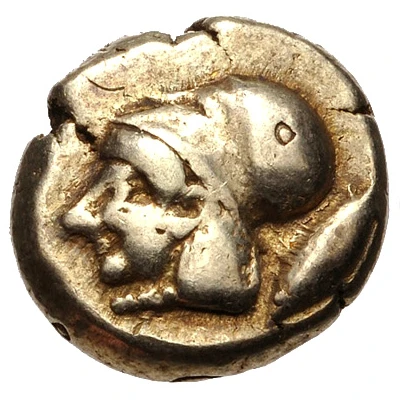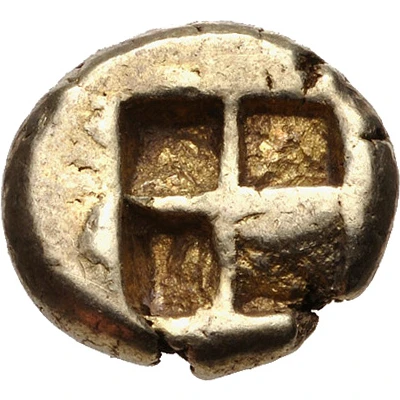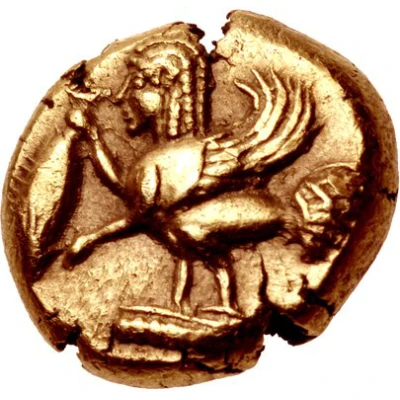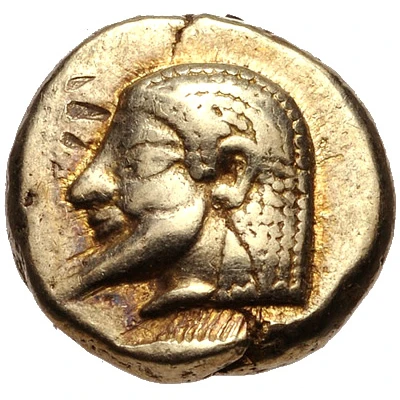
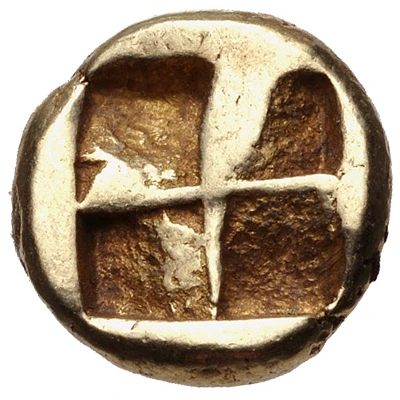

© Classical Numismatic Group, Inc.
Hekte 550 BC - 450 BC
| Electrum | 2.67 g | 11.0 mm |
| Issuer | Kyzikos (Mysia) |
|---|---|
| Period | City administration (600 BC - 1 AD) |
| Type | Standard circulation coin |
| Years | 550 BC - 450 BC |
| Value | Hekte (⅙) |
| Currency | Electrum Stater (600-330BC) |
| Composition | Electrum |
| Weight | 2.67 g |
| Diameter | 11.0 mm |
| Shape | Round (irregular) |
| Technique | Hammered, Incuse |
| Demonetized | Yes |
| Updated | 2024-10-10 |
| Numista | N#133999 |
|---|---|
| Rarity index | 100% |
Reverse
Quadripartite incuse square.
Interesting fact
The Hekte coin was used as a form of currency in the ancient city of Kyzikos (Mysia) and was made of electrum, a naturally occurring alloy of gold and silver. Despite its small weight of 2.67 grams, the Hekte coin was a significant denomination in its time and was used for everyday transactions. Its design featured an image of a lion's head, which was a symbol of power and strength in ancient Greek culture. The coin's minting process was also unique, as it was produced using a technique called "flaning," where the metal was hammered into shape and then polished to create a smooth surface. Overall, the Hekte coin is a fascinating piece of history that provides insight into the economic and cultural practices of ancient civilizations.
Price
| Date | Mintage | VG | F | VF | XF | AU | UNC |
|---|---|---|---|---|---|---|---|
| ND (550 BC - 450 BC) | - | - | - | - | - | - |
Values in the table are based on evaluations by sales realized on Internet platforms. They serve as an indication only for Hekte (550 BC - 450 BC) coin.
